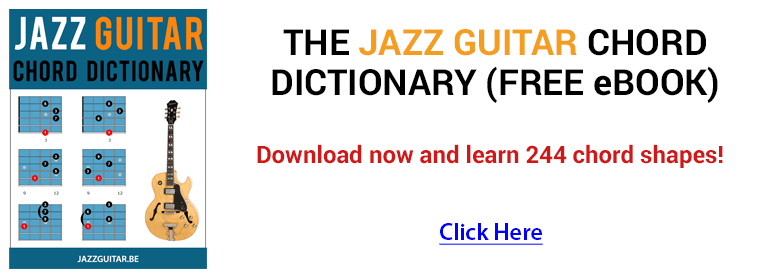-
Real Book chords say D7, starting chord, (A7), last chord of turnaround. The song is clearly in Am though right?? (some books say Am6 first chord, no E dominants anywhere also?)
Also no F#'s in the whole piece. Just a series of ii-V-I's in Am, or C major.
Thanks for any analysis....Sailor
-
05-03-2010 07:15 PM
-
I'd tend to call the first chord Am6 (and think of the melody D-note as a "neighboring tone"). The second chord is the "dominant" of Am, some kind of first inversion E. Improvisatonally, that's more or less A-dorian to A-harm-minor (although on this forum, someone is liable to tell you to use some kind of an Fm on the second chord
 ).
).
FWIW, it's basically the same two first chords (I and V) for How Insensitive. Well, actually they have the same first three chords.
It's possible that whoever wrote that chart was infuenced by classical theory. I seem to remember something about there being no such thing as a m6, and getting in truble for calling it that. In classical, that first chord might be the first inversion of on F# diminished triad with a minor seventh? Some jazz players call that F# "half-demented" or something, although I used to get in trouble for calling it that, too; or F#m7b5 as well. If one insists on call it a D-something, how about a rootless D9. The E is really the home melody note.
All kidding aside, I think that tends to be an important piece of guiar mechanics, that Am6, F#mi7b5, and D9 (rootless) are the same chord.Last edited by Aristotle; 05-03-2010 at 11:42 PM.
-
Thanks Aristotle - now we're getting somewhere! First chord is definitely Am6. Second chord must be subbing for V...the rest is a series of II-V-I's, ending in a II-V-I in C major?
Sailor
-
Sailor, if you aren't already, try listening to the original Jobim version. The Real Book has some added chords and substitutions that make it a little bit more difficult.
-
Why is the second chord a sub for V, and not just V?
 Originally Posted by Sailor
Originally Posted by Sailor
-
Well it's listed as Abdim7, or G#dim7...maybe it is functioning as just V. Oh, I see..a rootless E7?
Sailor
-
If you alternate bass notes, then it won't be so rootless.

-
Aristotle...you the man

Sailor
-
Has anyone got tab or sheet for "Corcovado" arranged by Jack Marshall?
This is how it sounds...
-
OK, I hate these analysis thread, they always seem to get into a "tastes great" versus "less filling" argument. But here's my thoughts. And I'm not basing my analysis on Jobim's arrangement but how jazz musicians play it.
The key is C. Songs often move through several keys but it is the final cadence that determines the key. It is the target towards which the song is moving. This song starts out in F but moves to C.
The first chord of the melody is either an Am6 of a D7/A but they are almost the same thing so the point is moot. If it is an Am6, then this is just a iiim7-biiidim-iim7 progression. It is a common progression (mm.9-11 of "Some Day My Prince Will Come") and Jobim used it a lot (mm.1-6 of "How Insensitive"). Normally the iiim7 can be thought of as a substitute for the I, but the F# in the Am6 makes that not work in this case.
The Abdim is of course just a diminished passing chord. You can think of it as an inversion of a tonic diminsihed (also called a "common-tone diminished.") The chord progression I-biiidim-ii-V-I is a common one (the beginning of "Witchcraft"). Really this is the same chord progression, just with some substitution on the first chord.
If we think of it as a D7, then it is a V7/ii and the Abdim is just and interpolation between the D7 and the Gm7. Interestingly, the Abdim shares a lot of notes with a G7 and functions much in same way here. II7-iim7-V7-I is a common progression (mm.3-8 of "Take the A-Train") and the D7 has just been tacked on here. Truth be told, I sometimes think of that Abdim as a G13b9 (implying the G half-whole diminished scale) with good results.
Well, that is a lot of ambiguity. So what. I find that in a lot of Jobim's music like that. I don't think that he was thinking about fitting what he was writing into some cookie cutter idea of what western harmony is "supposed" to be. Remember, theory doesn't tell us what sounds good - what sounds good influences theory. One thing about standards is that they are often formulaic in their approach to chord progressions - this ii-V-I leads to that ii-V-I, etc. Jobim was a little more free in the use of chord progressions, often leading to things that at first glance look a little odd to us that are used to standard jazz progressions, but can be shown to be logical and be good voice leading upon further examination.
I think that all of the explanations above are good and make some sense. I don't think that any of them are the "correct" one. They are all incomplete attempts to explain sublime music. I'm not saying that the attempt is without value, as long as we understand that it will always be incomplete. But I like that.
Well, I've rambled on enough. Sorry, I tend to do that - beer, boredom and theory questions combine to have that effect on me.
Peace,
KevinLast edited by ksjazzguitar; 10-30-2010 at 11:24 AM.
-
Here's a link to a PDF on the site that joey45 indicated:
http://p.download.uol.com.br/tomjobi.../corcovado.pdf
Seems like there are a few things different in there than what I've seen before (i.e., Real Book, etc.). JazzGuitarist's YouTube vid' is loosely there; but I'd suggest that we not consider this vid' the definitive version.
Jobim's harmony is cool because so much of it is derived from voice-leading, and this includes the bass lines. So, the overall voicings are often inversions (i.e., the root's not on the bottom).
-
That's an interesting comment, that Tom wanted it to be free. Years ago I wanted to publish an article on the web based on Jobim's "Wave." I wrote to his publisher and they absolutely refused to let me use even a portion of the tune, even though I offered to pay a licensing fee.
 Originally Posted by joey45
Originally Posted by joey45
Steve
-
No dis intended, but that is a pretty bare bones arrangement, he leaves out half the chords; plus you have his fingers to look at. You really need the tab for that?
 Originally Posted by JazzGuitarist
Originally Posted by JazzGuitarist
And if you want some free advice, IMO, when it moves from the Fm7 (8th fret) to the Bb7, it's a lot easier and smoother to use Bb in the 6th position than to shift all the way to the root position.
-
Hi! Can someone tell me what does Byrd play between F6 and last chord Fm6?
I think he moves from Em7 to Am7 ?, but I cannot get clearly melody that he play.
Am6 , Abdim7, Gm7, C13, C/F, Fmaj, F6, ? , Fm6
Corcovado.mp3 - File Shared from Box.net - Free Online File StorageLast edited by JazzGuitarist; 12-11-2010 at 04:41 PM.
-
Here's what I came up with:

Of course you have to listen to it for the exact rhythm and how to let the chords ring, but you get the idea. And he may be using open strings for some of those. Actually, I guess the second to last chord should be a D/A. And of course the last chord could be thought of as Fdim7/Ab.
Peace,
KevinLast edited by ksjazzguitar; 12-12-2010 at 04:45 AM.
-
Jeez, you give away something for free and suddenly people start taking if for granted.
 Originally Posted by Jazz Maniac
Originally Posted by Jazz Maniac

OK, if I understand you, you mean the chords that finish out the A section, before he goes to the top of the B section. That Db thing is not just the intro, it's how he plays the beginning of the A and B sections.
So, looking at the last four bars of the A section, starting in m.13 of the form (right after she sings "quiet talks of quiet dreams"), we get:
F7#11 / / / | / / / / | Fm / / / | Bb / C /
The is an eight note anticipation on the C, but you get the idea. That's what I hear anyways.
Peace,
Kevin
-
Nice arrangement of the head on that Cassandra Wilson vid! Bassist is bumming me out with his intonation on his solo ... but, whatever. Cassandra's having trouble interpreting her adlibs, too ...
Agreeing with Kevin's notes on those 4 bars, btw.
-
Tnx ksjazzguitar!
 Originally Posted by ksjazzguitar
Originally Posted by ksjazzguitar
Last edited by Jazz Maniac; 02-16-2011 at 11:42 AM.




 Reply With Quote
Reply With Quote



I found this Ibanez rarity
Today, 03:05 PM in Guitar, Amps & Gizmos